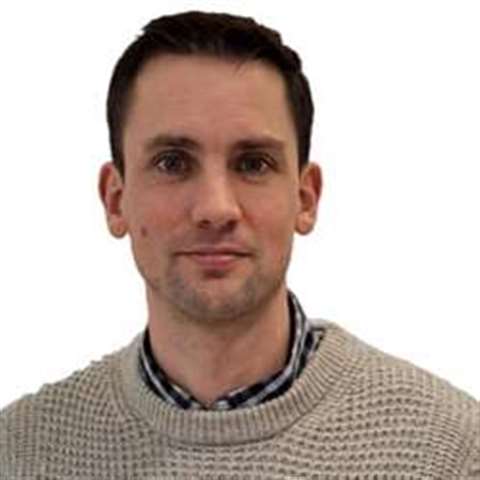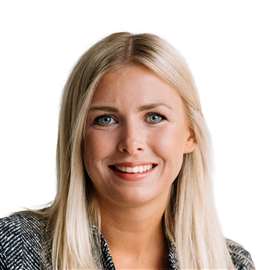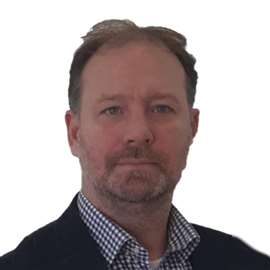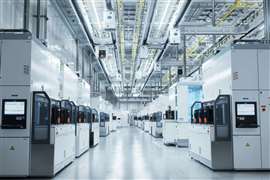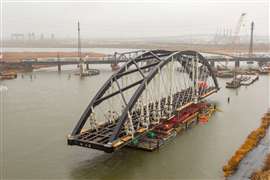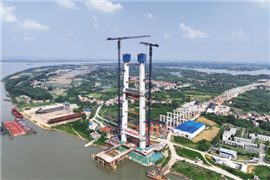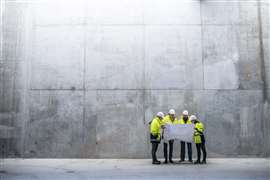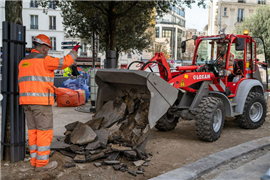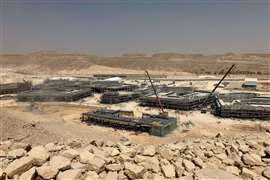Read this article in Français Deutsch Italiano Português Español
Why Skanska launched an advanced tech unit in the US
20 March 2025
Skanska USA Building – a regional arm of Sweden-based contractor Skanska – launched the Skanska Advanced Technology (SAT) unit earlier last month. Construction Briefing gets an inside look at SAT, with the help of its director Katie Coulson, a 25-year veteran of the company.
 A render of a data centre created by artificial intelligence (AI). (Image: Adobe Stock)
A render of a data centre created by artificial intelligence (AI). (Image: Adobe Stock)
On the whole, the company said launching SAT is a strategic move aimed at addressing the growing demand for high-tech construction; delivering specialised projects such as semiconductor fabrication facilities, data centres, and other advanced technology infrastructure.
Coulson, who has worked across various high-tech sectors, describes the timing of SAT’s creation as pivotal, given the surge in demand for such projects, particularly in her native US.
“We’re in a unique position to deliver these highly specialised projects for our clients,” she tells Construction Briefing. “With the expansion of AI [artificial intelligence], cloud computing, and other high-tech industries, companies are looking for strategic partners who understand the operational challenges of these complex facilities.”
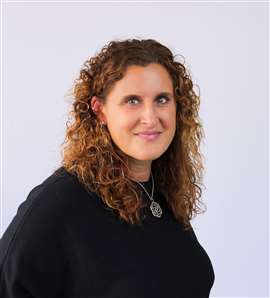 Katie Coulson, Skanska USA
Katie Coulson, Skanska USA
What is Skanska Advanced Technology?
SAT is a dedicated unit within Skanska USA that consolidates the company’s expertise in high-tech construction.
The goal, Coulson says, is to standardise and streamline project execution, ensuring efficiency across multiple geographies and clients. According to Coulson, the unit allows Skanska to capitalise on its years of experience in the sector and develop best practices for the industry’s evolving needs.
“We’ve been doing this type of work for decades,” she explains. “But now, instead of working on these projects in silos, we’re bringing it all together to improve execution and innovation.”
The primary focus of SAT is on designing, constructing, and retrofitting highly complex facilities that house sensitive equipment and require precise environmental controls, like fab and manufacturing facilities, data centres and high-science labs.
Why is Skanska Advaned Technology needed in the US?
 Where construction and technology merge (Image: Adobe Stock)
Where construction and technology merge (Image: Adobe Stock)
The need to create a specialised unit to tackle these complex projects is due to the fast-paced and adaptive nature of the segment.
“A lot of times, our clients are figuring out what they need to build while we’re already in the process of constructing it,” Coulson notes. “We do a lot of first-of-a-kind projects, and our job is to ensure they work when they’re complete.”
Everything from designing for water runoff, having the right energy infrastructure, and even basic security protocols can tangle the progress of a high-technology construction job, which Coulson said SAT is strategically built to unwind.
She adds increasing complexity and scale of tech builds, too, makes SAT an essential addition to Skanska’s modern operations.
“These aren’t just big boxes where you plug in machinery,” Coulson says. “The extreme power and cooling requirements, the security and redundancy measures, and the environmental controls make them highly specialised.”
Additionally, sustainability and efficiency are becoming more critical in construction. SAT is focused on solutions such as AI-driven design optimisation, modular construction and sustainable building materials.
“Clients are demanding more sustainable solutions, and we need to be at the forefront of delivering them,” Coulson says.
One example is Skanska’s trials of low-carbon concrete solutions. Coulson says SAT will trial different materials and approaches, serving as a niche research and development arm within Skanska USA.
The company, elsewhere, has experimented with sustainable concrete solutions in Sweden (one collection called “Green Concrete”) and the Czech Republic, where Skanska is trialling concrete made 100% from recycled concrete and masonry aggregates. Skanska has also researched concrete reinforced with basalt fibres.
Another key advantage of SAT is its role in retrofitting existing facilities without disrupting ongoing operations.
“Many of these facilities run 24/7, so we need to make upgrades without causing downtime,” she explains. “That’s where our experience in mitigating impacts comes into play.”
The future of Skanska’s advanced tech unit for construction
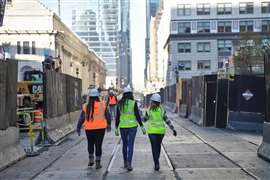 Skanska workers walk along a construction site. (Image: Skanska)
Skanska workers walk along a construction site. (Image: Skanska)
SAT is already working on several projects and has positioned itself as a central resource within Skanska.
Coulson says, going forward, she sees the unit as a way to enhance collaboration between teams and improve how Skanska approaches high-tech construction.
“Now, when someone within Skanska encounters a highly technical challenge, they know exactly where to go for expertise,” she says. “That kind of efficiency is a game-changer.”
Essentially, Coulson envisions SAT as a hub for continuous innovation and strategic problem-solving. “We’re always looking at new ways to build—whether that’s through AI-driven design, offsite manufacturing, or advanced robotics,” she explains. “Our goal is to stay ahead of market needs and help our clients implement the latest construction technologies.”
Additionally, Coulson emphasises the importance of research and development within the unit. “We’re constantly trialling new materials and construction methods,” she says. “Exploring how prefabrication can improve efficiency, and even integrating more automated tools into our processes.”
SAT’s future also includes a stronger focus on adapting to regional challenges.
“A project in the Midwest has very different infrastructure and environmental requirements compared to one on the West Coast,” Coulson notes. “That’s why SAT is positioned to develop solutions that are not only cutting-edge but also adaptable to different locations and regulatory environments.”
As demand for high-tech facilities continues to grow, Coulson expects SAT to play a key role in Skanska’s strategy for the US market. With a combination of cutting-edge construction methods, sustainability initiatives, and a highly experienced team, the unit is poised to tackle some of the industry’s most complex challenges.
“The bottom line is that technology is evolving at an incredible pace, and we need to evolve with it,” Coulson says. “That’s what SAT is about – helping our clients stay ahead, building the facilities of the future, and ensuring we’re always one step ahead of what’s coming next.”
STAY CONNECTED



Receive the information you need when you need it through our world-leading magazines, newsletters and daily briefings.
CONNECT WITH THE TEAM

